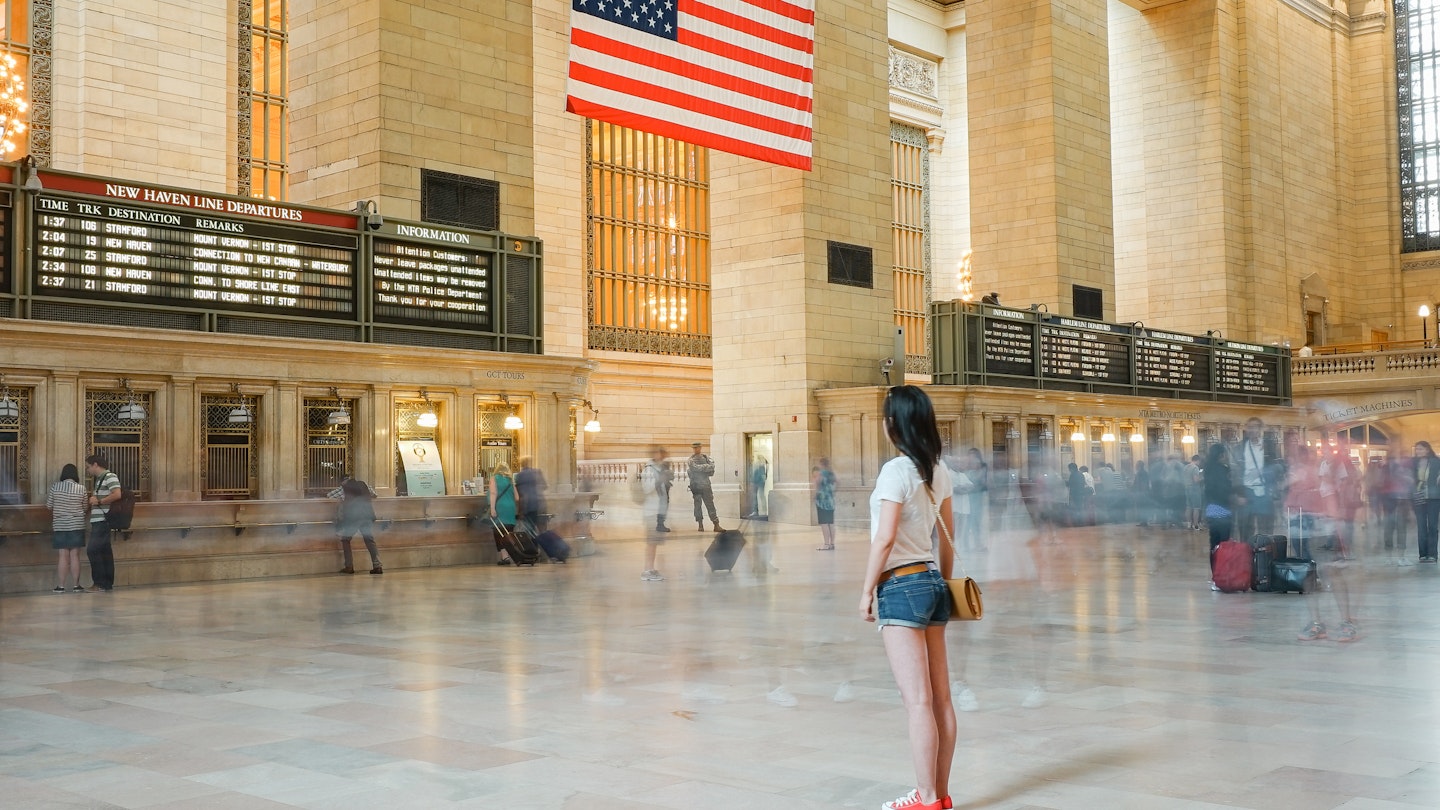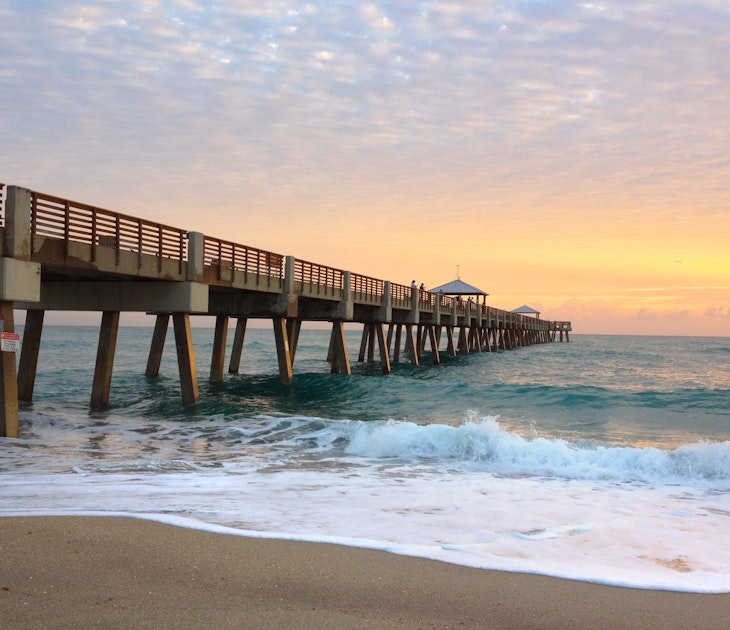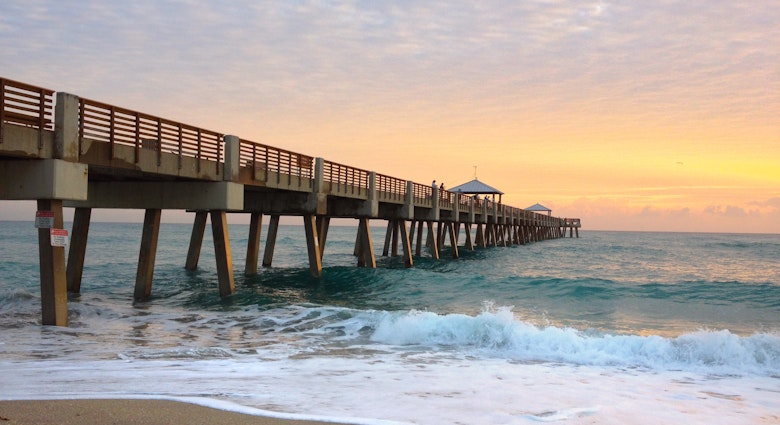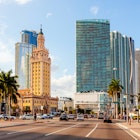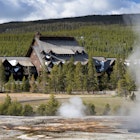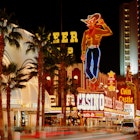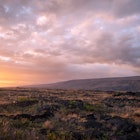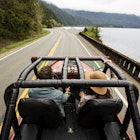Hitting the open road is a quintessentially American pursuit, romanticized by the likes of Kerouac, Steinbeck and, well, Barbie.
And with thousands of miles of interstates and backroads linking cities across the continental USA, exploring by car is easy. But driving can also be time-consuming – the US is the world’s fourth largest country by area – and expensive, especially with fuel and car rental costs on the rise.
Fortunately, there are a number of transportation options in the US, including an extensive air travel network, that will suit a variety of travel preferences. Here's what you need to know to plan your travels across the US.

For convenience and flexibility, travel by car
To reach rural areas – and most national parks – a car is essential. Fuel prices average $4/gallon, and the rate for a car rental ranges from around $45 to $80 daily, or $245 to $500 weekly, depending on the size of the car. Prices typically include unlimited mileage. If you reserve a few weeks ahead and prepay, you can often score a better price. Most major airports have car rental agencies on site, though prices will likely be higher than those at off-site companies. To rent a car, you will need insurance, which is legally required. Larger cities may have rentals available through a car-sharing network like Turo.
Foreign visitors can legally drive a car in the US for up to 12 months using their home drivers license. However, an International Driving Permit (IDP) will have more credibility with US traffic police, especially if your home license doesn’t have a photo or isn’t in English. For a small fee, your automobile association at home can issue an IDP, valid for one year.
Major car rental companies offer fleets of hybrid or electric rental cars, though you’ll usually have to pay more. Travel by electric vehicles is increasingly popular, and charging stations are popping up nationwide to meet demand. It can still be a challenge to find a charge, however, particularly on longer road trips. Fortunately, with a bit of planning, several iconic American drives can be enjoyed in an EV with minimal stress.
Camper vans, including decked-out Mercedes Sprinters, are an increasingly popular rental option, especially in the West. These vehicles come equipped with beds – some are surprisingly comfy – and may include mini-fridges and other amenities. Mileage may be capped daily, however, and expect daily prices from $120 to $300 depending on make.

Relax and soak up the scenery on a train
Amtrak trains run regularly, and fairly reliably, along the eastern seaboard between Washington, DC and Boston, and they are a popular option for quick trips between the larger urban centers here. But in the rest of the country? Trains are rarely the quickest, cheapest or most reliable option. They can be a pleasant and relaxing way to see the country, however, and the scenery on western routes is often breathtaking, especially from double-decker Superliner trains with big-windowed sightseer lounges.
Amtrak has long-distance routes crossing the nation from east to west and from north to south. These routes connect with all of the USA’s biggest cities and many smaller ones. Amtrak’s Thruway buses provide connections to and from the rail network and smaller cities, as well as some national parks. Some long-distance trains run daily, while others run only three to five times per week. Consider purchasing Amtrak’s USA Rail Pass for countrywide trips.
Regional commuter trains provide faster, more frequent service on shorter routes, especially in the northeast corridor. Amtrak’s high-speed Acela Express trains are the most expensive, and rail passes are not valid on these trains. Other commuter rail lines include those serving the Lake Michigan shoreline near Chicago, Illinois, major cities on the West Coast and Charlotte, North Carolina and the Miami, Florida area in the South.
A scenic train, often fueled by a historic steam locomotive, can be a relaxing way to see spectacular scenery without a harrowing drive, especially in the mountains.
Take the bus to save money and easily link to big cities
Traveling by bus can be an economical way to get from city to city. Most middle-class Americans prefer to fly or drive, but buses will let you see the countryside. For the most part, buses are reliable, clean-ish and comfortable, and amenities typically include air-conditioning and a bathroom. Smoking onboard is not allowed.
Greyhound is the major long-distance bus company, with routes throughout the US and Canada. Routes typically follow major highways and stop in larger population centers. To reach smaller towns, you may need to transfer to a local or county bus system.
About 70 independent bus companies comprise the Trailways Transportation System. These companies operate on an interlining basis, with the Trailways website searching routes and managing ticketing. Note, however, that the Trailways website is not particularly helpful with route planning. Other long-distance bus lines with decent fares and free wi-fi (though it isn’t always the most reliable) include Megabus and FlixBus. The swanky new Jet Bus links Washington, DC and New York City (NYC) while the long-running Hampton Jitney connects NYC with the Hamptons and the North Fork.
Despite the elimination of many tiny destinations, non-express Greyhound buses still stop every 50 to 100 miles to pick up passengers, and long-distance buses still stop for meal breaks and driver changes. Many bus stations are clear and safe, but some are in sketchy areas. If you arrive at night, you may want to take a taxi or arrange a ride-share to your destination. Some towns have just a flag stop, not always in a walkable area.
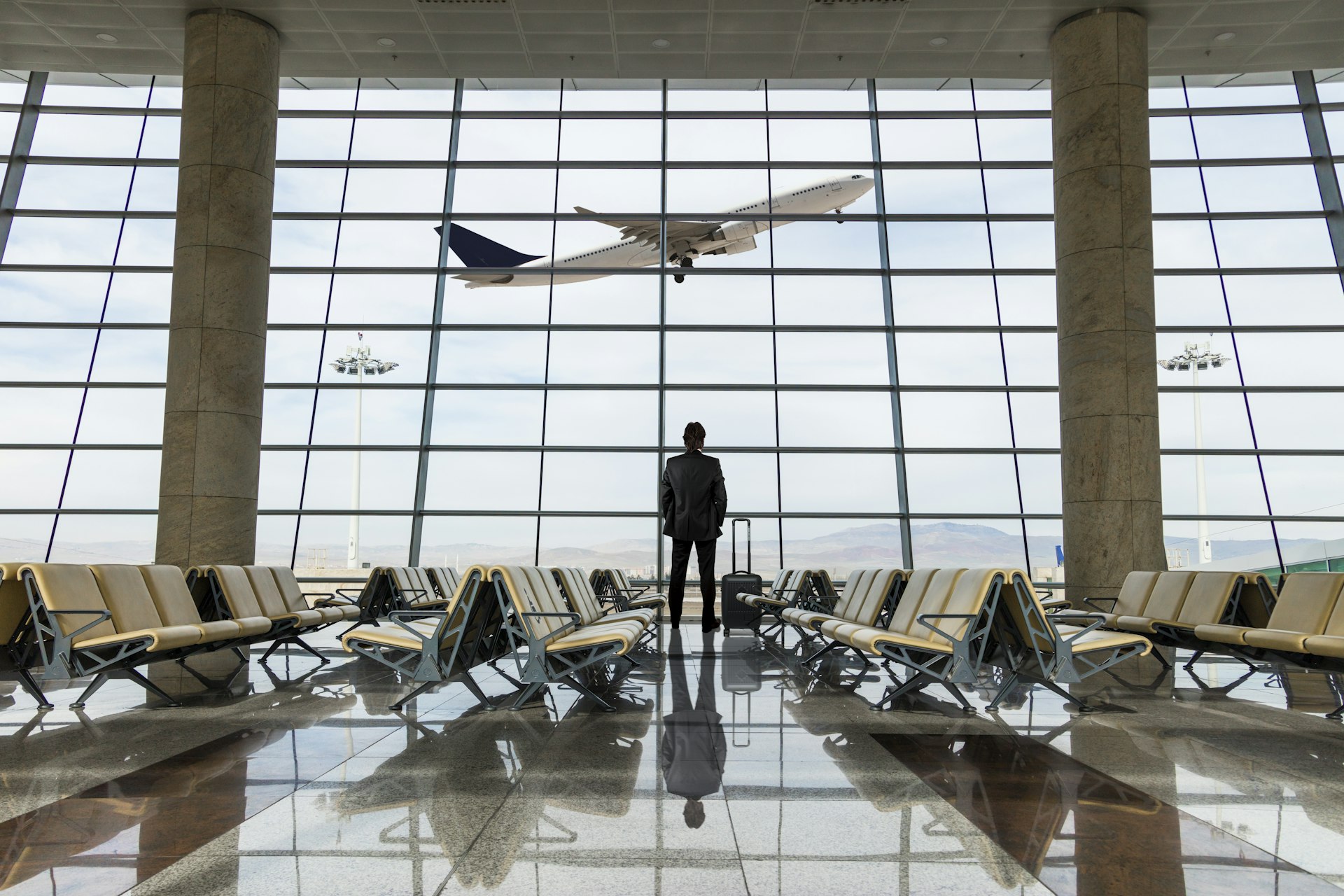
Get there quickly on a plane
If you're short on time and traveling between two regions, consider booking a flight. Flying is typically more expensive than traveling by bus, car or train, but the US has an extensive domestic air system. With numerous competing airlines, hundreds of airports and thousands of daily flights, you can cross the country pretty quickly. Main “hub” airports in the US include international gateways and many larger cities. Most smaller cities have a local or county airport, but you usually have to travel via a hub to reach them. To save money, consider new low-cost carriers like Avelo and Breeze, which are hoping to lure passengers with extremely low fares. Note that they typically serve smaller, less convenient airports.
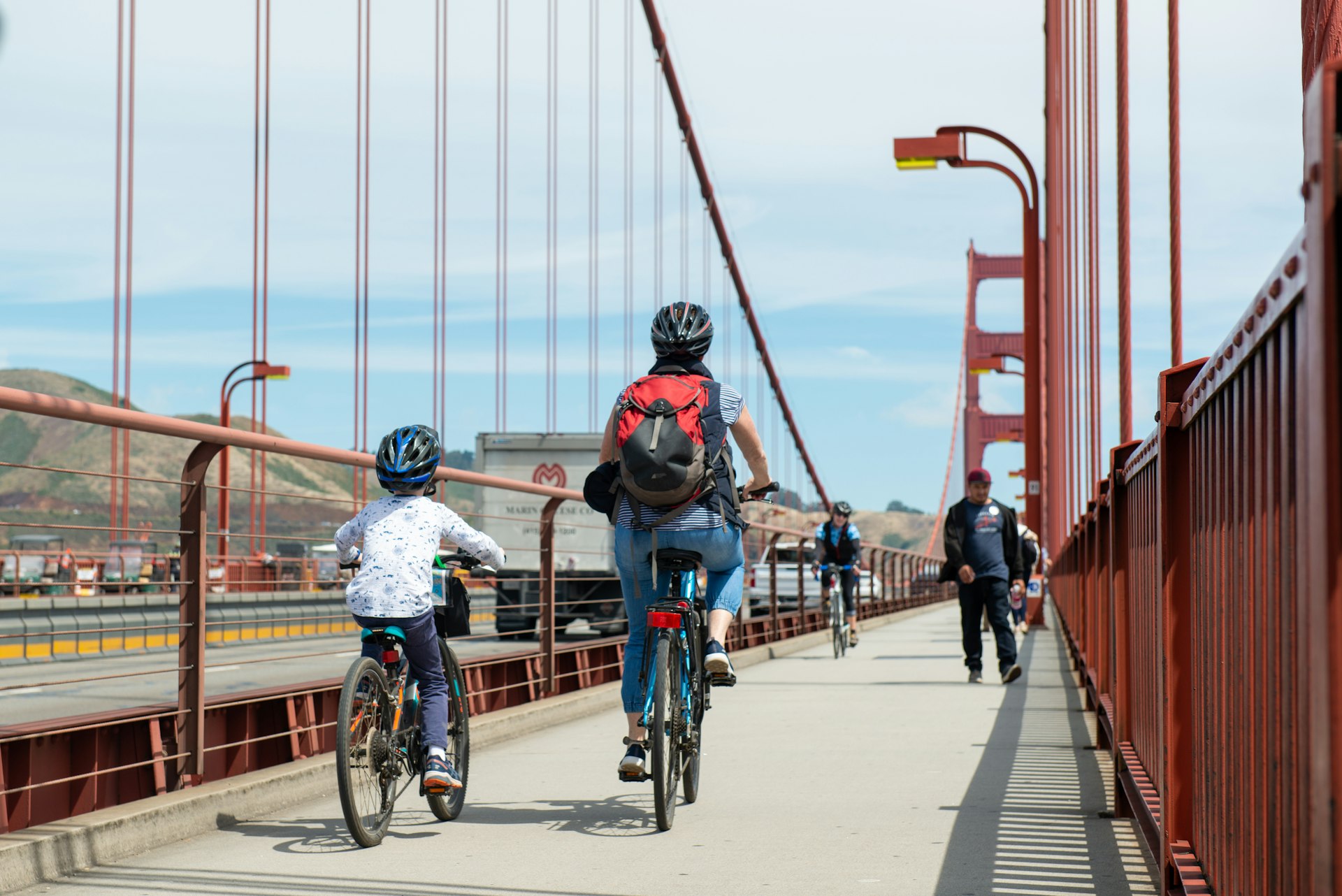
Immerse yourself in regional scenery on a bike tour
Bicycle touring can be an invigorating way to soak up regional scenery. On a biking tour, you’ll pedal along winding backroads (because bicycles are not usually permitted on freeways) and calculate progress in miles per day, not miles per hour. Cyclists must follow the same rules of the road as cars, but don’t expect drivers to respect your right of way. For epic cross-country journeys, get the support of a tour operator; it’s about two months of dedicated pedaling coast to coast.
Some cities are more amenable to cycling than others, but most have at least a few dedicated bike lanes and paths. Bikes can usually be carried on public transportation. Many cities are expanding their greenway networks, and bike-rental locations are often near key access points. E-bikes are increasingly popular for local touring, allowing riders to travel longer distances and even ascend steep mountains.

Hop on a ferry to explore unique islands off the coast
Coastal ferry services, typically run by the state, provide efficient, often photogenic links to major islands. Many larger ferries will transport private cars, motorcycles and bicycles. For spectacular views, it’s hard to beat the ferry running along the southeastern coast of Alaska and through the Inside Passage. Off the Pacific, ferries serve the scenic San Juan Islands in Washington and hiker friendly Catalina Island in California. In the Midwest, there are several islands in the Great Lakes that can be visited by boat, including Mackinac Island, Michigan, and the Apostle Islands off Wisconsin. On the East Coast, ferries whisk passengers to the upscale enclaves of Nantucket and Martha’s Vineyard off Massachusetts and the rugged, windswept shores of Ocracoke Island in North Carolina.
Travel in large cities is cheap, efficient and reliable
Subways and light-rail trains can be a cheap, efficient and reliable option within large US cities, but their coverage can be sparse to suburbs and outlying towns. The largest subway systems are in New York City, Chicago, Boston, Washington, DC, the San Francisco Bay Area, Philadelphia, Los Angeles and Atlanta. Other cities have small, one- or two-line rail systems that mainly serve downtown areas. Light-rail systems (trams and trolleys) are also popular. Denver, Seattle, San Diego, Minneapolis, Portland, Phoenix, Tucson and Charlotte are among the many places with light-rail systems, as are most cities with subways.
There's free transportation in many national parks
A few larger national parks, including Acadia, Grand Canyon, Yosemite and Zion, run free shuttles to their major sites. The problem? Getting to the park itself. To avoid renting a car, consider joining a guided tour from a gateway town, or hiring a private shuttle for drop-offs and pick-ups at park trailheads. Many national parks list approved shuttle companies on their websites.
Accessible transportation in the USA
If you have a disability, the USA can be an accommodating place for travelers thanks to the Americans with Disabilities Act (ADA). This federal law requires all public buildings, private buildings built after 1993 (including hotels, restaurants, theaters and museums) and public transit to be wheelchair accessible. However, call ahead to confirm what is available.
Some car rental agencies offer hand-controlled vehicles, sometimes with lifts and ramps, at no extra charge, but reserve well in advance. Wheelchair Getaways rents accessible vans throughout the USA. In many cities, public buses are accessible to wheelchair riders and will “kneel” if you are unable to use the steps; notify the driver if you need the ramp or lift.
Most cities have taxi companies with at least one accessible van, though you will have to call ahead. Cities with underground transport have varying levels of facilities, including elevators – there is an elevator at every station in DC, while NYC has elevators in only about a quarter of its stations.
For tips on travel and thoughtful insights about traveling with a disability, download Lonely Planet’s free Accessible Travel guide.

